Mini-Campaigns
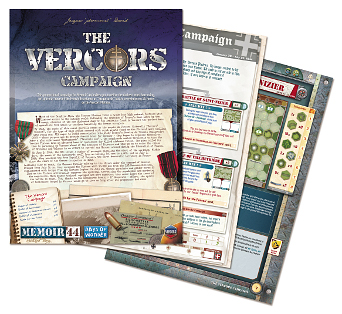
The Vercors Campaign
Designed by Jacques “jdrommel” David, this promotional campaign for Memoir ’44 invites you to relive the darkest, most harrowing, yet glorious hours of the French Resistance as “maquisards” battle overwhelming SS forces on the Vercors Plateau.
West of the Dauphiné Alps, the Vercors Plateau forms a 3,000 feet high natural fortress with limited access to the outside world. Following the invasion of France’s Zone Libre by the enemy, elements of the now disbanded Army of the Armistice found in Vercors the perfect base of operations from which to continue harassing the German occupier.
Download the campaign
mm_cb1_vercors_en.pdf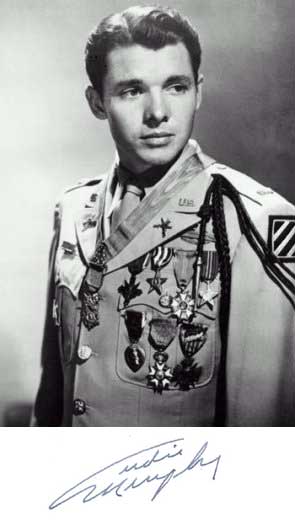
Audie Murphy's Campaign
Designed by Jacques “jdrommel” David, this campaign does not focus on a particular front or on an important general. It is dedicated to the memory of all of the GIs that, like Audie Murphy, did their duty during the dark hours of World War II, and that went “To Hell and Back”.
The 3rd US Infantry Division “Rock of the Marne” was one of the first divisions engaged in World War II. It fought in Sicily, in Italy (Salerne and Anzio landings), then in southern France, in Alsace, and finally in Germany, near the Czech border, where it finished the war.
The division suffered heavy losses throughout the war, as it was engaged in violent battles in Italy and in the Vosges mountains.
Download the campaign
mm_audie_murphy_en.pdf
The Invasion of Crete
On the morning of May 20, 1941, hundreds of German planes appeared in the Cretan sky. The invasion of Crete, codenamed Unternehmen Merkur, had just begun. About 15,000 German Fallschirmjäger were dropped onto various strategic points of the island with the intent of capturing the British airfields and harbors. Taking these objectives would grant control of the Eastern Mediterranean to the Axis forces.
Download the campaign
mm_crete.pdfBonus scenarios
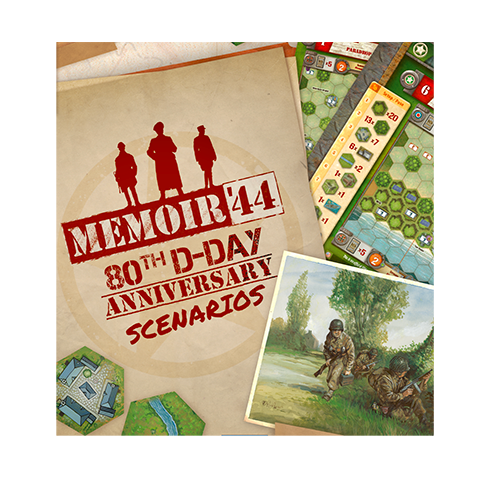
80th D-DAY ANNIVERSARY - 8 free scenarios!
On the occasion of the 80th anniversary of D-Day, discover this free collection of 8 scenarios to live the D-Day theater of the Second World War. These 8 scenarios played in the finals of major tournaments, and are all opportunities to unleash the Allied forces and relive the fighting.
Download scenarios
73-M44_Anniversary_Senario_20240603-1_compressed.pdf
VE-Day Scenarios
On May 8, 1945, after 6 years of war, the German Wehrmacht surrendered to the Allies in Berlin. War in Europe was finally over. 1945, however, saw the final throes of a powerful military; as the American and British forces pushed forward on the western front, Soviet forces advanced tirelessly from the east, closing in on Berlin. Struggling to defend the fatherland, German soldiers proved to be fierce warriors, even when outnumbered or encircled. The war would not end as easily as expected.
Download the scenario
mm_ve-day_v2_en.pdf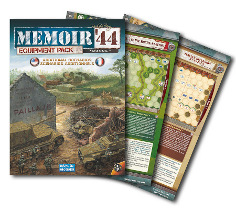
Equipment Pack Bonus Scenarios
The Equipment Pack Bonus Scenarios span theaters as far flung as the French Stand Near Arras during the fall of Dunkirk; the battle of Vetko Village in the Soviet-Finnish Winter War; and a Breakthrough Scenario featuring the British counter-attack against the Japanese in Burma at Torbung, these 8 scenarios will put your Equipment Pack figures to the ultimate test.
Download the scenario
mm_eq_bonus.pdf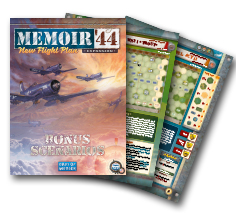
New Flight Plan Bonus Scenarios
To celebrate the release of this expansion, here is a leaflet of 10 bonus scenarios designed by Jacques “jdrommel” David.
Download the scenario
mm_nfp_bonus_en.pdfRemembrance scenarios
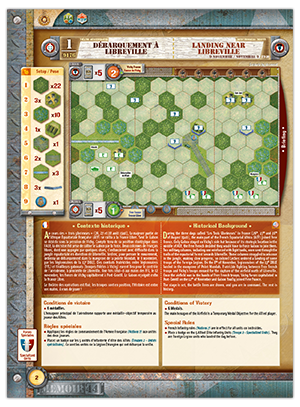
November 1940: Landing near Libreville
Designed by Jacques “jdrommel” David
After the capitulation of France in June 1940, French Equatorial Africa became a major strategic objective for the Free French Forces. In August 1940, Chad, Ubangi-Shari and French Congo embraced General De Gaulle’s cause. Only Gabon remained loyal to the Vichy France government, so the decision was made to conquer the country. On November 9th, 1940 a fratricide struggle took place: Free French troops fought Vichy forces for control of the airfield of Libreville.
Download the scenario
73-M44-RemembranceScenarios-19012021-1.pdf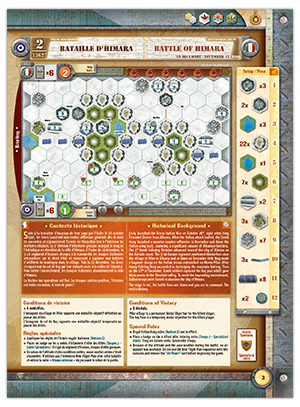
December 1940: Battle of Himara
Designed by Jacques “jdrommel” David
Italy declared war on Greece October 28th, 1940 but by December, Mussolini’s troops had stalled. Then the unthinkable happened: in November, the Greek Army launched a counter-offensive and drove the Italians out of Greece and back into Albania. On December 19th, 1940, in the Hilmara region, the Greek forces assaulted Italian troops entrenched on Monte Pilur and threatened to encircle them.
Download the scenario
73-M44-RemembranceScenarios-19012021-2.pdf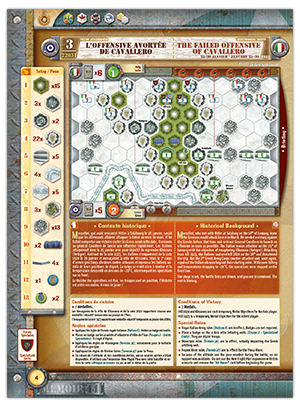
January 1941: The failed offensive of Cavallero
Designed by Jacques “jdrommel” David
Italy has been bogged down in a war against Greece since October 1940. Although it’s a war Mussolini himself started, it hasn’t been the decisive campaign he was hoping for. It is now a matter of honor for the Italian army to win a military victory before its powerful German ally comes to its aid.
Download the scenario
73-M44-RemembranceScenarios-19012021-3.pdf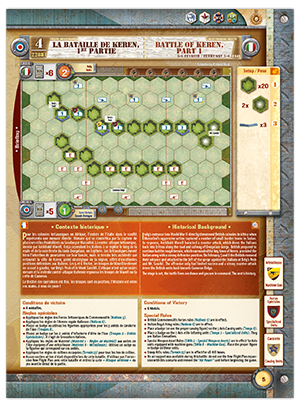
February 1941: Battle of Keren, part 1
Designed by Richard Borg
At the start of the East African Campaign, British troops liberated the Sudanese border from the Italians and pushed them back into Eritrea. In February the Allies launched their offensive against the key town of Keren but met determined resistance as the Italian forces took advantage of the natural defensive positions provided by the jagged landscape.
Download the scenario
73-M44-RemembranceScenarios-12022021-4.pdf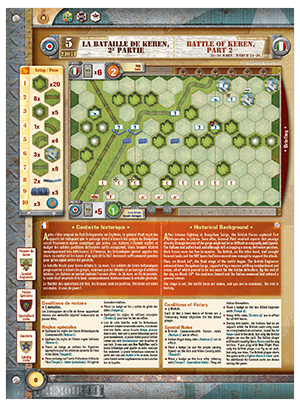
March 1941: Battle of Keren, part 2
Designed by Richard Borg
After intense fighting, the British Commonwealth forces finally captured Fort Dologorodoc. On March 24th, the battle of Keren entered its final stage with a massive artillery bombardment and armor support as British Engineers worked to secure the road in Dongolass Gorge. Despite their strong defensive position, the outnumbered Italian troops were fighting for survival.
Download the scenario
73-M44-RemembranceScenarios-25022021-5.pdf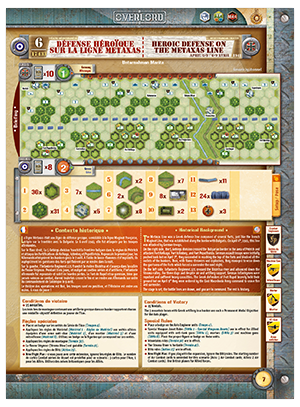
April 1941: Heroic defense on the Metaxas Line
Overlord Format – Designed by Jacques “jdrommel” David
After another failed Italian offensive in Albania against Greece in March 1941 (Operation Primavera), The Greco-Italian War reached a stalemate. Germany had little choice but to come and assist its ally. On April 6th, German troops crossed the Greco-Bulgarian border and Operation Marita began. Entrenched on the Metaxas Line, the outnumbered and under-equipped Greek defenders did their best to resist the invasion of the mighty Wehrmacht.
Download the scenario
73-M44-RemembranceScenarios-03012022-6.pdf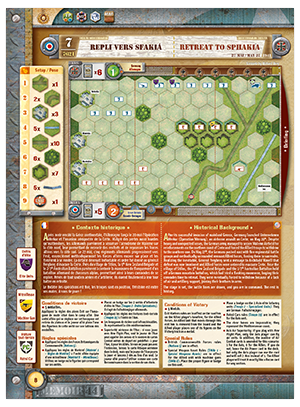
May 1941: Retreat to Sphakia
Designed by Richard Borg
Less than a month after launching Operation Marita, mainland Greece was under Axis control. Hitler then shifted his focus to Crete where the Allies had retreated. On May 20th, the largest airborne assault in history was launched on the northern coast of the island. One week later, and despite tremendous losses, German troops managed to push the Allies towards the southern coast. For the defenders, only one thing remained: evacuation.
Download the scenario
73-M44-RemembranceScenarios-25052021-7.pdf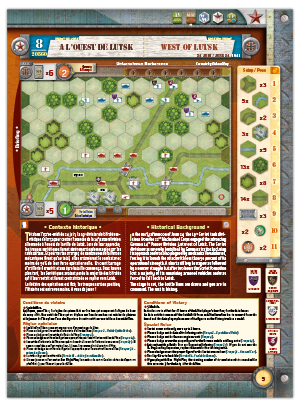
June 1941: West of Lutsk
Designed by Richard Borg
Operation Barbarossa, the invasion of Soviet Union by Germany, was launched on June 22nd, 1941. On June 24th, a German panzer division threatened Lutsk, a former Polish city that was part of the territories annexed by the USSR in 1939. The 19th Soviet tank division was sent to stop the enemy despite mechanical trouble.
Download the scenario
73-M44-RemembranceScenarios-24062021-8.pdf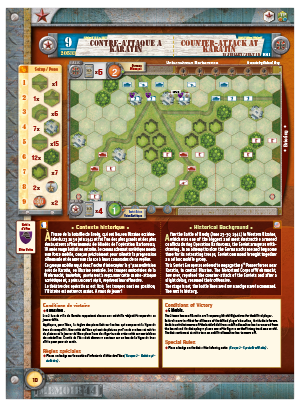
July 1941: Counter-attack at Karatin
Designed by Richard Borg
On June 30th, 1941, the Battle of Brody ended. During this huge armored battle, the Soviet Union army inflicted heavy losses to the German but suffered colossal losses in tanks itself and had no choice to withdraw towards Central Ukraine. On July 15th, a mobile group was sent to Karatin in order to slow down the German panzers and buy their retreating comrades some time.
Download the scenario
73-M44-RemembranceScenarios-13072021-9.pdf
August 1941: Defensive battle at Sasselie
Designed by Jacques “jdrommel” David
In August 1941, the German divisions were rapidly gaining ground in Ukraine. On August 15th, a German armored reconnaissance force slipped into Sasselie, a village in the path of retreating soviet troops. Here, they hid and entrenched themselves, ready to face the inevitable assault of the Red Army trying to get back east.
Download the scenario
73-M44-RemembranceScenarios-27072021-10.pdf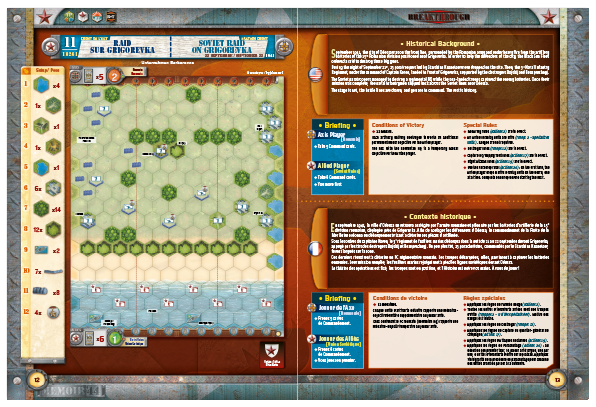
September 1941: Soviet raid on Grigorevka
Breakthrough Format – Designed by Jacques “jdrommel” David
Odessa was an important Ukrainian port city on the Black Sea and therefore a major strategic objective for the Axis. In August, the Romanian 4th Army launched an offensive to conquer it but met stronger resistance than expected. Soon, the city was under siege. On September 21st, the Soviet Black Sea Fleet ordered a raid to destroy the Romanian artillery firing at Odessa to give their comrades some respite.
Download the scenario
73-M44-RemembranceScenarios-10082021-11.pdf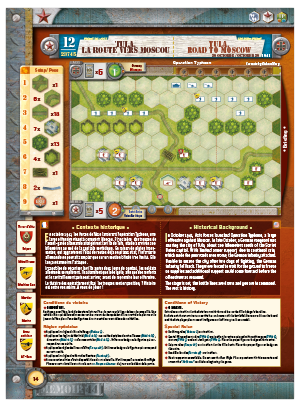
October 1941: Tula, road to Moscow
Designed by Richard Borg
In October 1941, Germany launched Operation Typhoon. The strategy was a large pincer move, aimed at attacking Moscow from both north and south. At the end of the month, roughly 200 km south of the Soviet capital, a German vanguard troop approached the city of Tula. Despite lacking proper armor support, they decided to attack.
Download the scenario
73-M44-RemembranceScenarios-14102021-12.pdf
November 1941: Relief of Tobruk
Designed by Richard Borg
With its deep-water port and its water-purification plant, Tobruk was a major strategic objective in North Africa. Captured by the British in January 1941, Rommel’s forces laid siege to the city in April. Then in November, to retake Cyrenaica and relieve Tobruk, the Allies launched Operation Crusader. A few days into the attack, a combined force of New-Zealand infantry and British armor faced the German defenders of Point 175.
Download the scenario
73-M44-RemembranceScenarios-04112021-13.pdf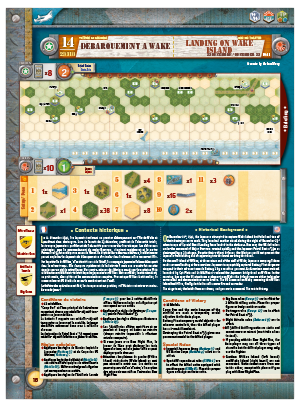
December 1941: Landing on Wake Island
Overlord Format – Designed by Jacques “jdrommel” David
The Japanese attack of Pearl Harbor on December 7th, 1941 led to the formal entry of the United States into World War II. A few hours later, Japanese forces began to bombard the US defenses on the Island of Wake. On December 11th, a first Japanese landing attempt was repelled by the US garrison. But on the night of December 23rd a new, strengthened, Japanese force was determined to use the cover of darkness to successfully land and conquer Wake Island.
Download the scenario
73-M44-RemembranceScenarios-22122021-14.pdf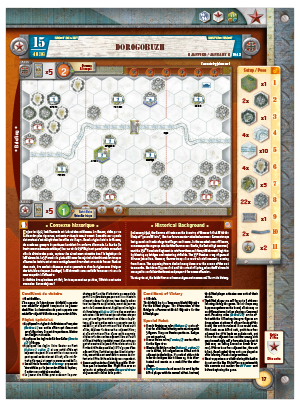
January 1942: Dorogobuzh
Designed by Jacques “jdrommel” David
By the end of 1941, the German offensive on Moscow had failed on the doorstep. With the help of “General Winter”, Soviet forces counterattacked and forced the Wehrmacht to withdraw into defensive positions. In January 1942, groups of Russian partisans, reinforced by elite paratroopers, harassed the German rear and disrupted their logistics.
Download the scenario
73-M44-RemembranceScenarios-14012022-15.pdf
February 1942: Landing at Dili
Designed by Jacques “jdrommel” David
By the end of 1941, the Allies feared that the neutral, but defenseless, Portuguese Timor colony could be a weak point in the Dutch East Indies defense. In December 1941, Australian and Dutch troops began the occupation of East Timor, provoking Portuguese official protests on one hand, but receiving tacit cooperation of local authorities on the other. These occupying troops were to withdraw on the arrival of the Portuguese reinforcements, promised by the Salazar government. On February 19th, 1942, though, the Japanese invasion forces came first.
Download the scenario
73-M44-RemembranceScenarios-10022022-16.pdf
March 1942: Hill 693
Designed by Jacques “jdrommel” David
At the start of January 1942, the Soviets launched a major offensive from the Volkhov river aimed at relieving Leningrad, besieged since September 1941. The 2nd Shock Army, spearheading the operation, advanced almost 100 kilometers. In February it was close to Lyuban, halfway to Leningrad, but its advance had stalled and on March 19th the Germans began a counter-attack from the rear. The 2nd Shock Army was suddenly cut off from its supply lines. The Soviets had no choice but to turn back and try to break their encirclement.
Download the scenario
73-M44-RemembranceScenarios-24032022-17.pdf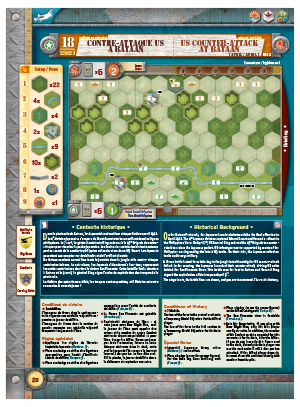
April 1942: US counter-attack at Bataan
Designed by Jacques “jdrommel” David
Only one day after the attack on Pearl Harbor, on December 7, 1941, Japan started the invasion of the Philippines. General McArthur, along with his American and Philippine troops, were quickly deprived of their air support. Facing relentless advances of the enemy, they had no choice but to withdraw onto the Bataan peninsula; the Japanese final assault on Bataan started early April 1942. On April 7, with their backs against the wall, the defenders launched what would prove to be their last counterattack before their surrender.
Download the scenario
73-M44-RemembranceScenarios-26042022-18.pdf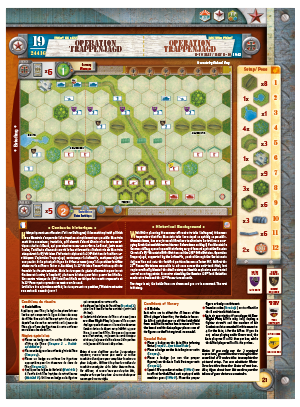
May 1942: Operation Trappenjagd
Designed by Richard Borg
Sevastopol was under siege for seven months but seizing the largest port of Crimea became even more important as Hitler turned his eyes towards Stalingrad. To safely advance his German troops, general von Manstein had to first annihilate the Soviet bridgehead in Kerch which had landed in December 1941; these soviet forces on the eastern part of the Crimean peninsula could threaten his rear. Operation Trappenjagd was launched.
Download the scenario
73-M44-RemembranceScenarios-02062022-19.pdf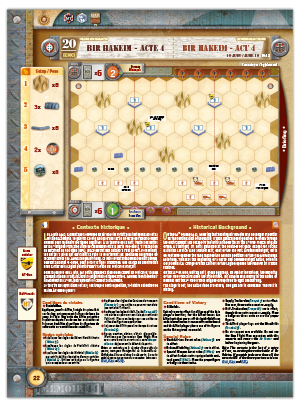
June 1942: Bir Hakeim - Act 4
Designed by Jacques “jdrommel” David
Aiming at conquering Tobruk, Erwin Rommel launched a large offensive on Gazala on May 26th, 1942. His plan was to feign a frontal assault in the North, while he sent his best divisions to the South and circumvented the Allied defensive line. It was here, besieged in Bir Hakeim, that the 1st Free French Brigade distinguished itself with an heroic 16-day defense. General Koening’s delaying mission accomplished, he ordered a full evacuation of Bir Hakeim on the night of June 10th. But first he would have to break through the encircling Wehrmacht forces.
Download the scenario
73-M44-RemembranceScenarios-22062022-20.pdf
July 1942: The capture of Voronezh
Designed by Jacques “jdrommel” David
Operation Fall Blau (“Case Blue”) started in May 1942 and set the German army a new objective on the Eastern front: Caucasus and its oil fields. Charged with securing the Northern flank and advancing alongside the Don River until reaching Stalingrad, the 4th Panzer Army arrived, early July 1942, in the suburbs of Voronezh. The harsh street battles that occured here were a foretaste of what would await the belligerents shortly after, in Stalingrad.
Download the scenario
73-M44-RemembranceScenarios-20072022-21.pdf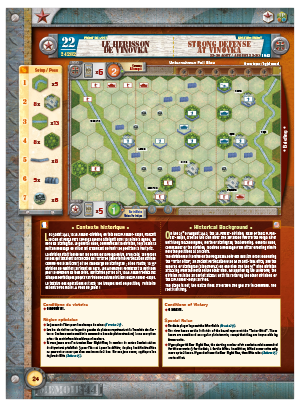
August 1942: Strong defense at Vinovka
Designed by Jacques “jdrommel” David
Operation Fall Blau continued during the Summer of 1942 and the German forces followed two axis of progression: one toward the South and the Caucasus, the other toward Stalingrad, in the East. On the latter, the Germans reached Stalingrad’s suburbs but their progress was slowed because of a lack of supply. Soviet command took the opportunity to launch an armored counter-offensive. Isolated on the Volga bank and caught in a pincer movement, the 16.Panzer-Division was forced to defend its position until reinforcements arrived.
Download the scenario
73-M44-RemembranceScenarios-13092022-22.pdf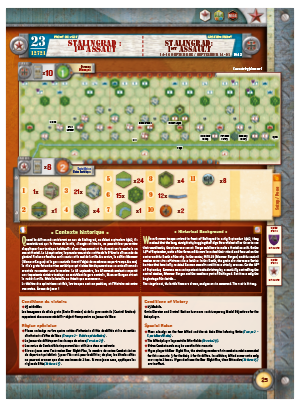
September 1942: Stalingrad, 1st assault
Designed by Jacques “jdrommel” David
North of Stalingrad, the Soviet armored counter-offensives in August were bloody. Though they did not significantly repel the German forces, they bought the Russians some precious time. Resting on the shore of the Volga, Stalingrad was encircled from North, West and South, and devastated by the Luftwaffe bombings. But its defenders were now entrenched. On September 13th, the assault on Stalingrad began and along with it, one of the greatest urban battles in History.
Download the scenario
73-M44-RemembranceScenarios-26092022-23.pdf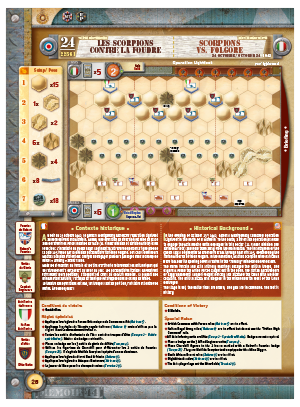
October 1942: Scorpions vs. Folgore
Designed by Jacques “jdrommel” David
In North Africa, Rommel’s advance was stopped twice by the Allies: first during the battle of El Alamein in July 1942, and a second time during the battle of Alam el Halfa, in August. In October, Montgomery launched a counteroffensive and the second battle of El Alamein began. Tasked with breaking through near Hill 105, the Queen Royal Regiment faced the Italian Division Folgore, entrenched behind a vast minefield.
Download the scenario
73-M44-RemembranceScenarios-27102022-24.pdf
November 1942: Battle for Oran
Designed by Jacques “jdrommel” David
During Spring 1942, the Allies were concerned about the USSR collapsing and decided to open a second front to relieve the Soviet troops. A landing in French colonies of North Africa was decided on, attacking the shores of Morocco and Algeria. Operation Torch began on November 8th. Unlike Algiers, taken in less than a day thanks to a Resistance coup, loyal pro-Vichy generals were still in place in Oran. And they were determined to repel the Allies.
Download the scenario
73-M44-RemembranceScenarios-06122022-25.pdf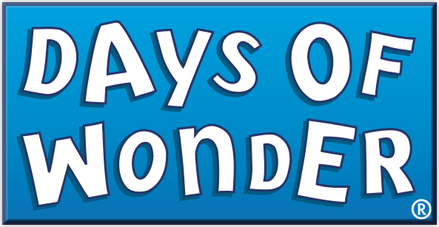




 Deutsch
Deutsch English
English Español
Español Français
Français Italiano
Italiano Polski
Polski